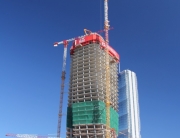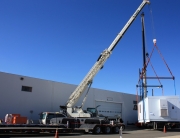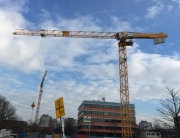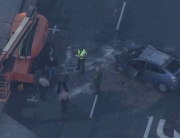All of you must be familiar with the name OSHA (Occupational Safety and Health Administrator). A letter regarding crane repair, crane maintenance, and crane technician has been found on their official website. The letter states some Frequently asked Questions (FAQ’s) about the crane industry.
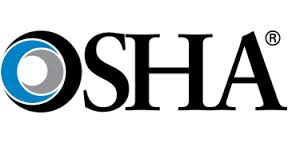
The letter was written by Director James G Maddux Directorate of Construction at OSHA as a response to the letter of Ms. Kira Henschel Secretary of Power Crane and Shovel Association. Ms. Kira Henschel wrote a letter to OSHA to ask questions about the scope of the Cranes and Derricks in Construction standard, and the certification and qualification requirements for mechanics, inspectors, and testers under this standard. So here we provide you with a brief about their conversation.
Question 1: Do assembly/disassembly, inspection and testing of cranes/derricks come under construction activities? What would happen if these activities are included in a general industry setting?
Answer: Once a crane/derrick or its components are used in construction activities, this use—including assembly/disassembly, inspection and testing of the crane/derrick—is regulated by the Cranes and Derricks in Construction standard. Section 1926.1400 establishes the scope of the standard as follows: “This standard applies to power-operated equipment, when used in construction, that can hoist, lower and horizontally move a suspended load…” [emphasis added]. Employers using cranes or derricks to perform non-construction activities are not covered by the Cranes and Derricks in Construction standard.
In general, when an employee performs activities covered by the Cranes and Derricks in Construction standard at a construction worksite, such as assembly/disassembly, inspection, hoisting loads, or traveling from place to place on the worksite, the performance of these activities is considered construction. As a result, the employer must comply with the requirements of this standard, as well as any other applicable construction standards, because the activity in question occurs on a construction site and is expediting work that is integral to the construction process.
OSHA has provided general guidance for distinguishing between construction and general industry work in our November 18, 2003 letter to Mr. Raymond V. Knobbs, our May 11, 1999 letter to Mr. J. Nigel Ellis, our February 1, 1999 letter to Mr. Randall Tindell, and our August 11, 1994 memorandum for Regional Administrators. The OSHA website, www.osha.gov, provides access to these and other materials that aid in determining when Agency construction standards under 29 CFR 1926 apply and when they do not.
Question 2: Do the operator qualification and certification requirements mentioned under §1926.1427 apply to mechanics, inspectors or testers during assembly and disassembly under §1926.1404 and during inspection under §1926.1412?
Answer 2
Not generally. When the operator certification requirement of 29 CFR 1926.1427 becomes effective on November 10, 2014, an employee who operates a crane on a construction site must meet the requirements of §1926.1427 when the employee performs activities covered by the Cranes and Derricks in Construction standard, such as assembly/disassembly, hoisting loads, or traveling from place to place on the worksite. However, the §1926.1427 operator qualification and certification requirements do not apply to maintenance, inspection or verification of crane/derrick performance by maintenance, inspection and repair personnel. Operation of a crane/derrick for maintenance, inspection or performance verification purposes must meet the requirements of §1926.1429, Qualifications of maintenance and repair employees. Personnel who have satisfied the requirements for qualification/certification under §1926.1427 may perform maintenance, inspection and verification of crane/derrick performance, provided that they also meet the requirements of §1926.1429.
Section 1926.1429 provides:
(a) Maintenance, inspection and repair personnel are permitted to operate the equipment only where all of the following requirements are met:
(1) The operation is limited to those functions necessary to perform maintenance, inspect the equipment, or verify its performance.
(2) The personnel either:
(i) Operate the equipment under the direct supervision of an operator who meets the requirements of §1926.1427 … ; or
(ii) Are familiar with the operation, limitations, characteristics and hazards associated with the type of equipment.
(b) Maintenance and repair personnel must meet the definition of a qualified person1 with respect to the equipment and maintenance/repair tasks performed.
Question 3: Can an employee rely on ASME B 30.5-2004 or -2007 requirements under 5-3.1.1 in determining what qualification must be met by testers, inspectors and mechanics in order to comply with OSHA’s construction crane/derrick standards?
Response 3: No. OSHA has not incorporated by reference ASME Standard B 30.6-2004 or 2007 at 5-3.1.1 in 29 CFR 1926. Although requirements under the ASME standard, including the requirement that maintenance and inspection personnel limit operation of equipment to necessary functions, may be similar to those under §1926.1429, OSHA is required to enforce §1926.1429.
Thank you for your interest in occupational safety and health. We hope you find this information helpful. OSHA requirements are set by statute, standards, and regulations. Our interpretation letters explain these requirements and how they apply to particular circumstances, but they cannot create additional employer obligations. This letter constitutes OSHA’s interpretation of the requirements discussed. Note that our enforcement guidance may be affected by changes to OSHA rules. Also, from time to time we update our guidance in response to new information. To keep apprised of such developments, you can consult OSHA’s website at http://www.osha.gov. If you have any further questions, please feel free to contact the Directorate of Construction at (202) 693-2020.


